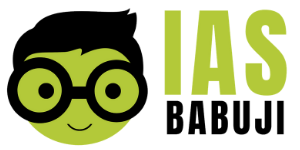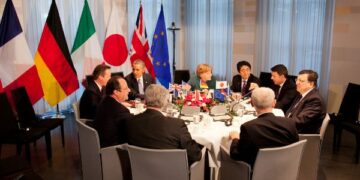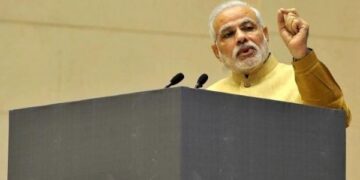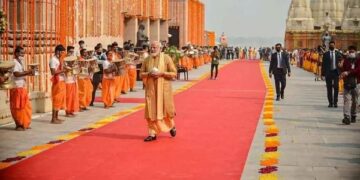The syllabus of the IAS test is well-known. To acquire the most excellent grades on the UPSC exam, one must cover the complete curriculum. We’ve addressed an important topic in this article. i.e., What is the history of the Israel-Palestine conflict and attacks? There’s also the Gaza-Israel conflict & Israel vs Palestine. We have included all of the information you’ll need to prepare for the IAS exam. Read the whole thing. Let’s get started.
Israel Palestine Conflict History
The conflict between Israel and Palestine (Israel vs Palestine), dubbed the “world’s most intractable conflict,” is rooted in a disagreement over land claimed as a biblical birthright by Jews and sought by Palestinians seeking self-determination. Palestinian self-determination refers to desires for enhanced autonomy and sovereign independence among some Palestinians and Palestinian nationalists and the international right of self-determination granted to Palestine. Despite numerous attempts to end the tension between the two countries, no agreement has been reached. let’s talk about the Israel Palestine conflict.
- Because of their religious beliefs & foreign culture, Jews have been persecuted throughout history.
- To escape oppression and establish their own state in their ancestral homeland, Israel, Jews founded the Zionist movement in 1897. The World Zionist Organization was founded in order to promote the creation of a Jewish homeland in Palestine.
- A considerable number of Jews began to flood into Palestine, where they purchased land and began to settle.
- The Sykes-Picot Agreement placed Palestine under British rule by 1916. (a secret agreement between Great Britain & France). As a result, the old Ottoman Turkish Empire was divided.
- Later, the British foreign secretary, James Balfour, committed to the establishment of a Jewish homeland through the Balfour Declaration.
- After the Nazis took control in Germany in the 1930s, the influx of Jews to Palestine accelerated dramatically, with hundreds of thousands of people being relocated from Europe to Palestine. Arabs perceived this as a danger to their homeland and fought back vehemently. The violence reached its apogee while the British government sat on the sidelines.
- The British government addressed the matter of Palestine’s future to the United Nations in 1947. The UN voted to divide the area into two countries. The Jewish people adopted the deal, and Israel declared its independence.
The Arabs’ fight against Israel (1948-49)
- Arabs considered the establishment of Israel as part of a plot to force them out of their homeland. As a result, the Arab countries of Egypt, Jordan, Iraq, and Syria declared war on Israel in 1948.
- Israel was victorious at the end of the war between Israel and Arab countries. Furthermore, it allowed Israel to expand its territory to a greater extent, marking the start of Israel’s expansionist agenda.
Israel’s fight against the Arab
- In 1967, Israel launched a pre-emptive strike against Egypt, Syria, and Jordan, and by the end of the Six-Day War, Israel had seized the Golan Heights from Syria, the West Bank, and East Jerusalem from Jordan, and the Sinai Peninsula and the Gaza Strip from Egypt.
- The 1967 war is especially relevant to today’s conflict since it gave Israel control of the West Bank and Gaza Strip, two territories inhabited by a substantial number of Palestinians.
- Following the 1967 war, Gaza and the West Bank were dubbed “Occupied Territories.”
UN Charter
- According to the UN Charter, there can be no legal territorial gains through conflict, even if a state is acting in self-defense.
- As a result, in response to the Six-Day War, the UN Security Council passed a resolution titled “Land for Peace,” which ordered that Israel return the conquered regions to the defeated states.
- In response to Israel’s refusal to return the gained lands, another Arab-Israeli war (Yom Kippur war) began in 1973, causing Israel some setbacks.
- Israel & Egypt concluded a peace treaty in 1979, and as a result, Israel returned the Sinai Peninsula to Egypt (1982). Egypt was the 1st Arab country to recognize Israel as a state.
Fatah and Hamas
- Hamas (Islamic Militant Group) for the Liberation of Palestine via Jihad was founded in 1987. It has refused to acknowledge Israel as a state. It has the backing of Iran and Syria.
- On the other hand, Western nations backed Fatah, a PLO group led by Yasser Arafat.
So this is the history of the Israel Palestine conflict.
Similarly, a conflict is raging between Ukraine and Russia. Here is a link to Ukraine Russia War, Crisis & Conflict – Russian Invasion of Ukrainian.
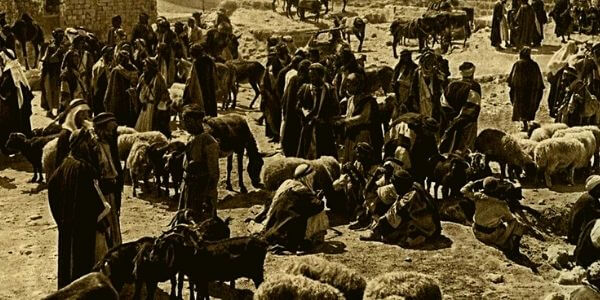
Intifada against Israel occupancy – Israel Palestine Conflict
First Intifada
- Palestinians revolted against Israel’s control of Gaza and the West Bank in 1987.
- Hundreds of people were killed during the First Palestinian Intifada
- The Oslo Peace Accords were signed in 1993 & a second deal signed in 1995 between then-Israeli Prime Minister Yitzhak Rabin & PLO leader Yasser Arafat put an end to the Intifada.
- Following this, the Palestinian Authority was founded and gained control of several Israeli regions.
Second Intifada
- In 1997, the Israeli army withdrew from sections of the West Bank. The Accords, however, were unable to bring permanent peace to the region, and the Second Palestinian Intifada began in 2000.
- The Israeli politician Ariel Sharon’s visit to the Al Aqsa Mosque in Jerusalem sparked the rioting.
- For years, there were widespread riots and violence. (Israel attack Palestine)
- Finally, a cease-fire was declared, and Israel planned to evacuate all troops & Jewish settlements from the Gaza Strip by the end of 2005.
First & Second Lebanon War
The First Lebanon War lasted from June 6, 1982, to June 5, 1985. It was an invasion of Southern Lebanon by the Israeli Defense Force (IDF) to root out the Palestinian Liberation Organization (PLO) operating there. The PLO launched strikes against Israel from its base in southern Lebanon; hence, the invasion was intended to put an end to these attacks. The conflict resulted in a tactical success for Israel but a strategic failure overall. The PLO was driven from Lebanon, while Israel’s adversary, Syria, gained its power and controlled Lebanon until 2005.
In Lebanon, the Golan Heights, Northern Israel, Israel, and Hezbollah began fighting in July 2006. However, an UN-brokered ceasefire brought it to a close after a few months. Hezbollah is a militant and political Shia Islamist group in Lebanon.
Hamas War
In 2006, Hamas, a Sunni Islamist terrorist faction, won the Palestinian elections. In 2007, Hamas beat Fatah (the political faction that governed the PLO) in a battle that began in 2006. Hamas (considered by many to be a terrorist organization) has fought with Israel, with notably notable clashes in 2008, 2012, and 2014.
After examining Israel vs Palestine, the Israel attack on Palestine, and the history of the Israel-Palestine conflict, Let us now discuss the Gaza-Israel conflict and the current situation.
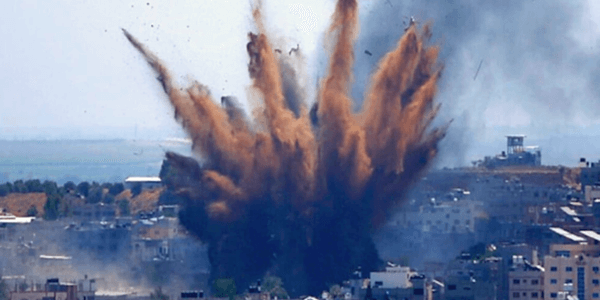
Current Situation – Israel Palestine Conflict
- Hamas rules Gaza.
- Israel and Egypt have strict control over Gaza’s borders. Israel continues to occupy the West Bank.
- Gaza, the West Bank, East Jordan, Lebanon & Syria are home to the majority of Palestinian refugees and their descendants.
- Tensions between Israel and Palestinians in Gaza, the West Bank, and East Jerusalem are at an all-time high.
- Returning Palestinians to return to their homes would jeopardize Israel’s existence, according to Israel.
- Israel claims Jerusalem as its capital in its entirety. Palestinians want East Jerusalem to be the capital of their future state.
- Despite Israel’s refusal to recognize Palestine as a state, more than 135 UN member states do.
Gaza Israel Conflict: On May 21, Israel and the Palestinian militant group Hamas reached a cease-fire agreement. It happened after 11 days of violence that killed at least 255 individuals. The majority of individuals murdered were Palestinians in Gaza. Both Israel and Hamas claimed victory in the most recent combat. The incident in May came after a month of escalating tensions in Jerusalem. But the fighting has been going on for decades.
India’s Stand on Israel Palestine Conflict
India has deep ties with both states and supports Palestine, but picking one over the other is bad. India has continuously backed the Palestinian people’s legitimate right to a state and the region’s urgent need for a just, comprehensive, and long-term peace based on UN Security Council resolutions and the idea of “Land for Peace.”
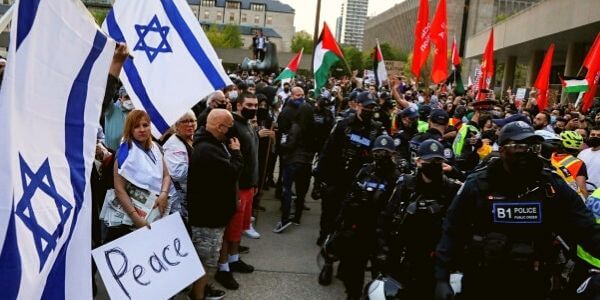
Conclusion- Israel Palestine Conflict
You will learn everything you need to know about Israel vs Palestine, Israel’s attack on Palestine, the Gaza & Israel conflict, and the history of the Israel-Palestine conflict in this article. While reading the article, write a list of all points you want to remember. This is a significant topic for the UPSC Exam.
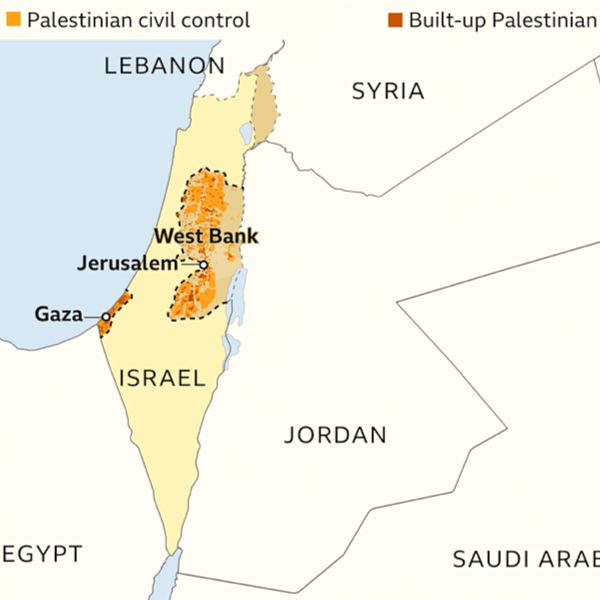
FAQ- Israel Palestine Conflict
In 1948
Jerusalem is a city that sits on both sides of the Israeli West Bank boundary. Both Israel & Palestine want to make it their cap the answer to the Israel- Palestine issue because it is home to some of the holy sites in both Judaism and Islam.
The Gaza Strip is a man-made entity that arose in 1948 when about 3-quarters of Palestine’s Arab inhabitants were moved, & in some cases expelled as part of Israel’s establishment.
Editor’s Note | Israel Palestine Conflict
In conclusion, the above article covers everything there is to know about Israel vs Palestine, Israel’s attack on Palestine, and the history of the Israel Palestine conflict. Also, as the conflict between Gaza and Israel, as well as the current scenario. One of the most essential topics for the IAS test is the conflict between Israel and Palestine. To pass the IAS exam, one must work hard and demonstrate dedication, as we usually emphasize. Many people apply for the exam, but only a handful will pass. So put in the effort and stay focused on your goal. All the best!
